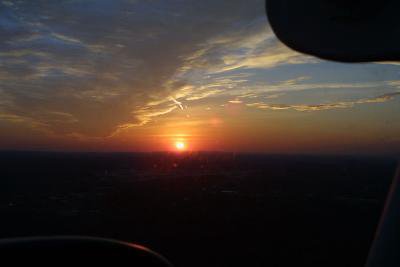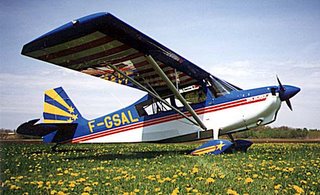Right seat
My second aerobatics lesson was cancelled on Saturday because the CFI was stuck out of town, so I went up with buddy and CFI John and flew from the right seat for the first time. Since I'll be spending much time on that side of the plane when I instruct (and later as an FO), I figured I'd take a gander at what it looks like.
All in all, I have to say there's not much to it.
John, who is sort of in between flying jobs at the moment, took off and went under the hood for a little bit. He then handed me the controls. Straight and level and tracking a radial were easy, so I decided to try my hand at steep turns. To the left, I lost a little altitude because the sight picture out the front is quite a bit different but remained within private PTS. To the right: no problem. Accomplished the 360 within commercial standards. Easy peasy.
John wanted to fly an approach, so while he pulled out his plate, briefed it and set up the radios for it I flew the plane around a little, rapidly getting comfortable with operating the controls from the right. The weather on Saturday was absolutely gorgeous and I soon lost myself in the comfortable and familiar feeling of flitting around the skies of New England.
When Boston finally got back to us for vectoring to the ILS29 at Bedford, I let John take the controls again and kept my eyes out for traffic as he once again disappeared under the hood.
He flew a nice tight approach and circled to land on 23, where he performed a nice touchdown then retracted flaps, added full power, took off and kept the plane level a few feet off the runway. The speed gathered quickly and he pulled the wheel back swiftly, which projected us several hundred feet in the air. Nice!
Plus, with the crisp cold air the 172SP was performing especially well.
Controls back to me to try out landing from the right seat. My first (left) pattern was a little sloppy as I had to look over John to see the field. Once on downwind, however, I was holding altitude, heading and speed without much effort and soon began a nice stabilized approach (albeit a hair low on final) to a decent landing. Flaps up, full power and we're off again.
Second time around the pattern, flying from the co-pilot seat now feels a lot more comfortable. I fly a nice tight pattern, level off at TPA, descend right on glide slope and plant the airplane softly on the centerline.
Very satisfying flight indeed!
Wonder what flying right seat in the soup is like...



